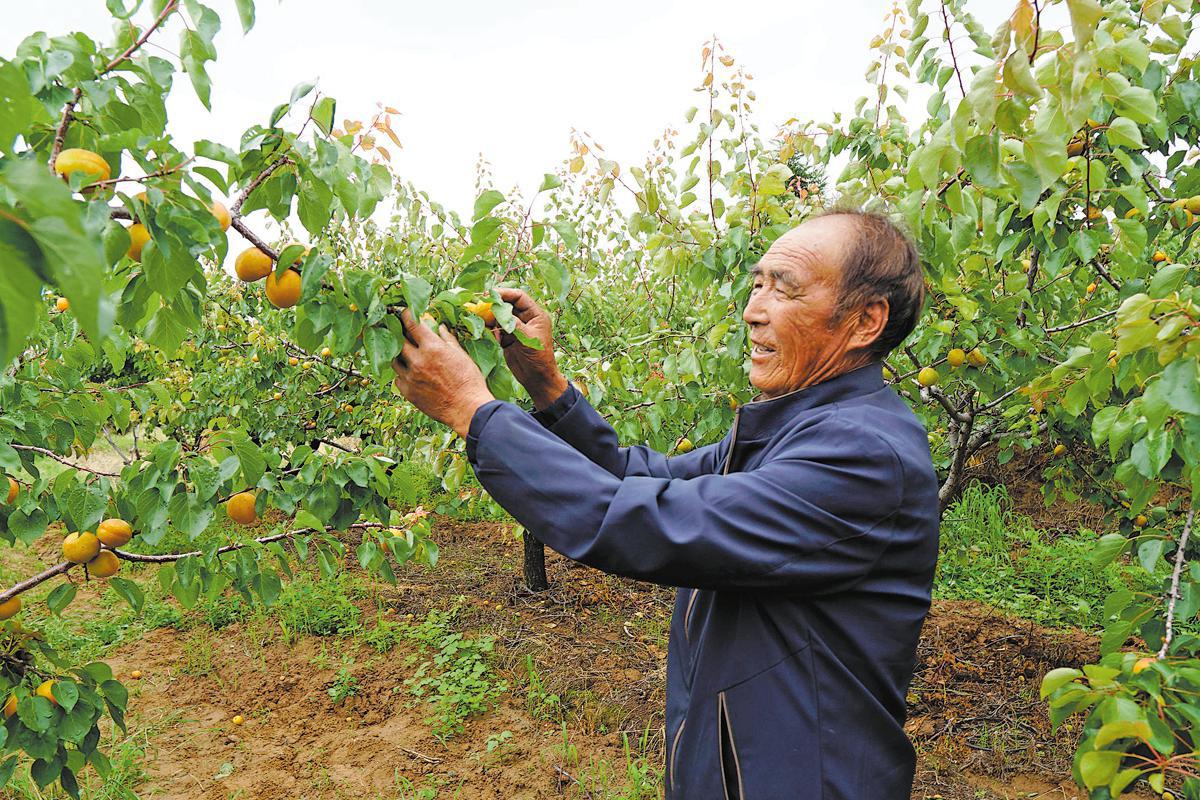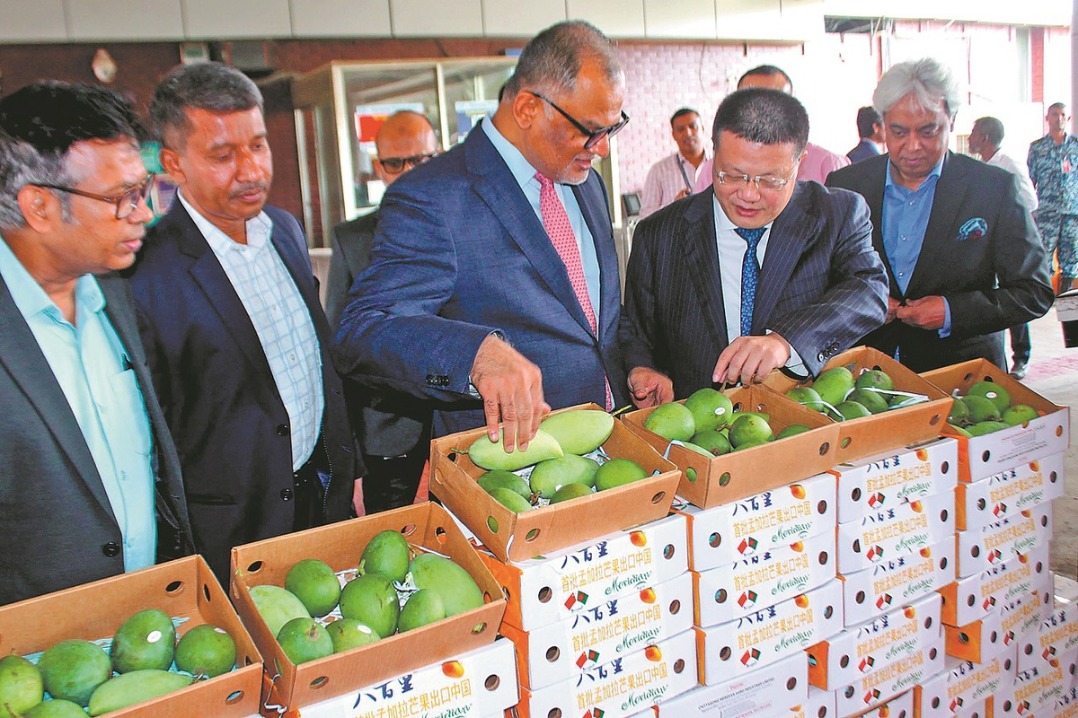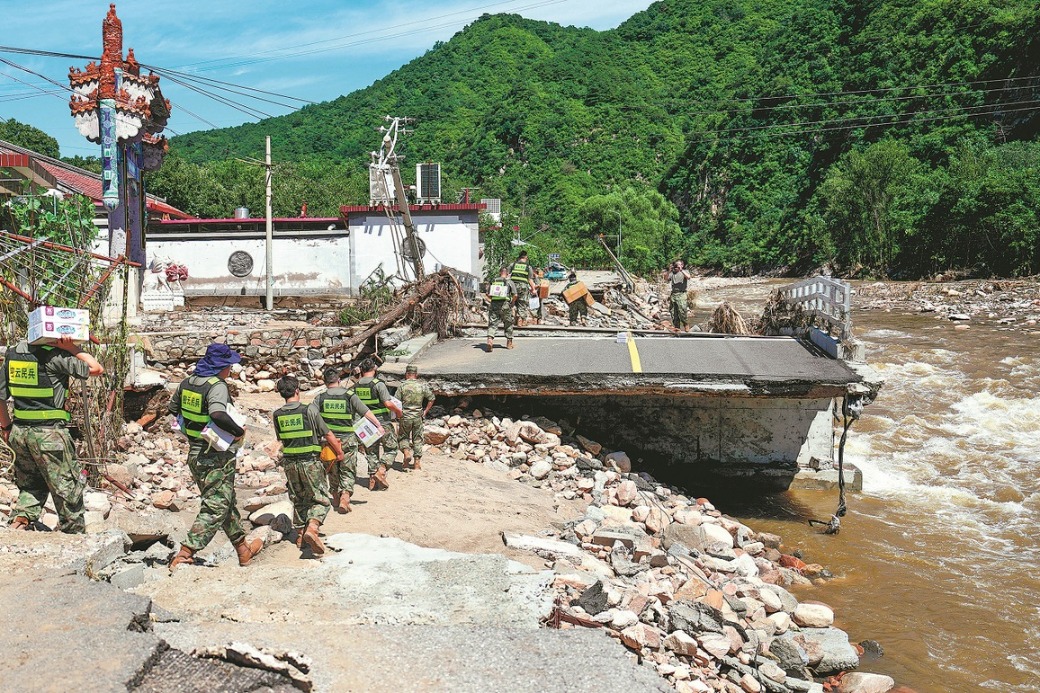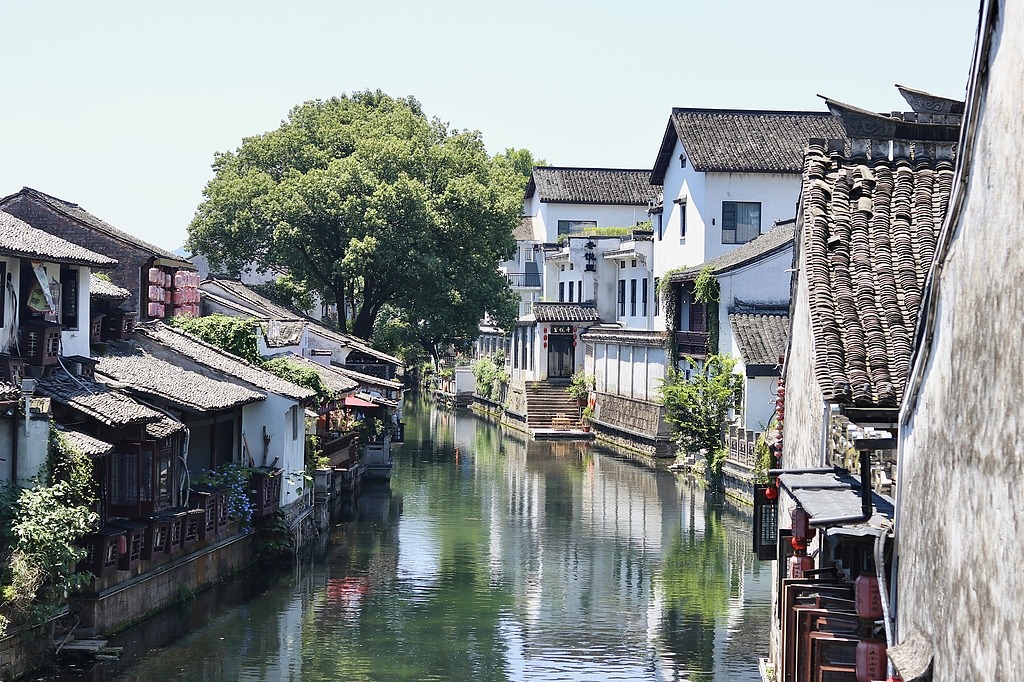Afforestation turns barren ravine into green oasis
'Youyu spirit' helps battle desertification, restore ecology


Wang's grandfather and father had shouldered shovels to plant trees voluntarily. In the 1980s, upon hearing that his hometown was still battling sandstorms, he closed his hotel business and returned to the village, determined to protect the land and turn the barren slopes green.
His tree-planting endeavors faced three major challenges.
Acquiring seedlings was difficult, requiring arduous journeys over mountains to fetch them. Planting was challenging due to the semi-desert soil's inability to retain water, necessitating the laying of river mud at the bottom of pits. Survival was tough for seedlings, with an average annual precipitation of fewer than 400 millimeters, prompting the innovation of "fish-scale pits" to collect rainwater on the mountainside.
Even then, during droughts, manual watering was necessary. Local women organized water-carrying teams, joining men in hauling water from the valleys to irrigate the saplings.
Equipped with his "three treasures" — a shovel for digging holes, dried bread as food on mountains, and frostbite ointment for cracked hands — Wang would dig and plant trees in up to 50 pits a day at his peak, often leaving him too exhausted to stand straight.
"I've thought about giving up, it's too tough," Wang said. Yet, seeing newly planted saplings partially buried by sand, he couldn't help but brush off the soil and prop them upright again.
"One must not abandon halfway; trees are no different."
After numerous failed attempts, he gradually mastered the art of tree planting. After 2000, the survival rates of his trees reached 80-90 percent and now, it's close to a perfect score.
























